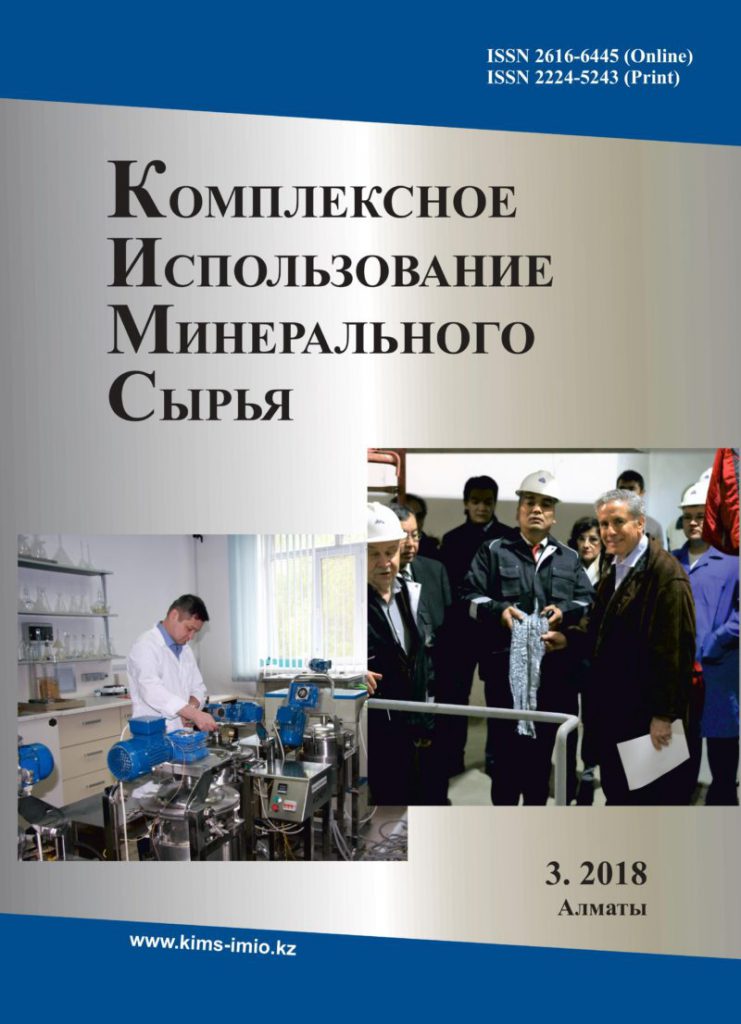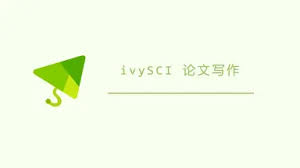Combined technology for gold desorption and ionite regeneration in the conical device
DOI:
https://doi.org/10.31643/2018/6445.13Keywords:
elution, desorption, combined technology, anion exchanger, thiocyanate solutions, acid thiourea solutions.Abstract
The principal technological scheme of desorption of gold and concomitant metal-impurities from the AM-2B resin phase used for the sorption processing of gold-bearing ores is considered. The proposed combined scheme, involving the use of two traditional, independent from each other methods (thiocyanate and acid-thiourea) for eluting gold, includes desorption of metal impurities from the resin with alkaline solutions of sodium thiocyanate, and gold with sulfuric acid solutions of thiourea. To shorten the duration of the process research of proposed technology was carried out the in a conical apparatus. The results of study of the elution of gold and impurity metals from anionite saturated with the following components, mg/g: Au – 2.6; Cu – 3.5; Zn – 1.3; Ni – 2.9; Co – 3.3, are given. It is shown that the main amount of impurity metals is desorbed from the resin upon its thiocyanate treatment, while the transition of gold into the eluate is negligible. The composition of the eluate in the thiocyanate treatment of saturated resin is, mg/l: Au – 1.7; Cu – 156.0; Zn – 53.0; Ni – 89.0; Co – 102.0. The subsequent treatment of the resin with sulfuric acid solutions of thiourea allows the conversion of 89.32 % of gold from the ion exchanger into the eluate. The resulting eluates containing ~113.0 mg/l gold and a small amount of impurities are target solutions for obtaining a valuable metal. The ion exchanger was regenerated by washing with water and treating with an alkaline solution of sodium to convert it to OH form, since gold sorption is carried out from alkaline cyanide solutions of heap leaching. Residual contents of components in the resin after regeneration were, mg/g: Au – 0.24; Cu – 0.23; Zn – 0.15; Ni – 0.07; Co – 1.29, which allows the successful use of the regenerated resin in the next stage of sorption.
Downloads
References
Barchenkov V.V. Tekhnologiya gidrometal- lurgicheskoy pererabotki zolotosoderzhashchikh flotokontsen- tratov s primeneniyem aktivnykh ugley (Technology of hydrometallurgical processing of gold-containing flotation concentrates with the use of active coals). Chita: Poisk, 2004. 242 (in Russ.)
Meretukov M.A. Zoloto: khimiya, mineralogiya, metallurgiya (Gold: chemistry, mineralogy, metallurgy). M.: Ore and Metals. 2008. 528 (in Russ.)
Absalyamova Kh.K. Issledovaniye vliyaniya razlichnykh faktorov na sorbtsionnoye izvlecheniye zolota iz bednykh zolotosoderzhashchikh rud (Investigation of the influence of various factors on sorption extraction of gold from poor gold-bearing ores). Kompleksnoye ispol'zovaniye mineral'nogo syr'ya = Complex use of mineral resources, 2002. 5, 32-35 (in Russ.)
Strizhko L.S., Bobokhonov B.A., Rabiyev B.R., Boboyev I.R. Tekhnologii pererabotki zolotosoderzhashchikh rud (Technologies of gold-bearing ore processing). Gornyj zhurnal =Mining journal. 2012. 7, 45-50 (in Russ.)
Krinitsyn D.O. Ravnovesiye i kinetika sorbtsii tiotsianatnykh kompleksov zolota (I) nekotorymi anionitami (Equilibrium and kinetics of sorption of thiocyanate gold complexes (I) by certain anion exchangers): 02.00.04. Thesis for the degree of candidate of chem. sci. Institute for Chemistry and Chem. Technol. Krasnoyarsk. 2009. 150 (in Russ.)
Erdenova M.B., Koyzhanova A.K., Osipovskaya L.L., Akchulakova S.T., Amanzholova L.U. Sorbtsionnoye izvlecheniye blagorodnykh metallov iz mnogokomponentnykh rastvorov (Sorption extraction of noble metals from multicomponent solutions). Kompleksnoye ispol'zovaniye mineral'nogo syr'ya = Complex use of mineral resources. 2014. 2, 50-57 (in Russ.)
Altynbek Sh.Ch., Baykonurova A.O. Izucheniye vliyaniya sostava zolotosoderzhashchikh rastvorov na sorbtsiyu zolota prirodnymi i sinteticheskimi ionitami (Study of the influence of the composition of gold- containing solutions on the sorption of gold by natural and synthetic ionites). Dokl. NAN Republic Kazakhstan = Reports of the National Academy of Sciences of the Republic of Kazakhstan. 2016. 4, 17-23 (in Russ.)
Kishibayev K. K., Tokpayev R. R., Atchabarova A. A., Efremov S. A., Voropayeva N. L Fernandez- Sanjurjo. M.J., Nechipurenko S. V., Nauryzbayev M. K., Tasibekov Kh. S., Karpachev V. V. Aktivirovannyye ugli razlichnoy prirody v protsessakh izvlecheniya zolota (Activated coals of different nature in the processes of gold extraction). Zhurnal prikladnoj khimii = Journal of Applied Chemistry. 2016. 3, 327. (in Russ.).
Bolotova L.S. Ionoobmennaya tekhnologiya v gidrometallurgii zolota (Ion-exchange technology in gold hydrometallurgy). Geologiya i razvedka nedr Kazakhstana = Geology and exploration of mineral resources of Kazakhstan. 2001. 2, 52-56 (in Russ.)
Özlem Bahadir Acikara. Ion-Exchange Chromatography and Its Applications. London: Intechopen limited, 2013, 2. 31-58. https://doi.org/10.5772/55744
Kotlyar Yu.A., Meretukov M.A., Strizhko L.S. Metallurgiya blagorodnykh metallov (Metallurgy of precious metals). Moscow: Ruda and Metally. 2005. 431 (in Russ.)
Davison I., Ride A. Trans. Inst. Min. Met. 1961. 737-739 (in Eng.)
Philip M. Cummins, Keith D. Rochfort, Brendan F. O’Connor. Ion-Exchange Chromatography: Basic Principles and Application. Dermot Walls and Sinéad T. Loughran (eds.), Protein Chromatography: Methods and Protocols, Methods in Molecular Biology. New York: Springer Science+Business Media, 2017. 1485, 209- 223. https://doi.org/10.1007/978-1-4939-6412-3_11
Vitkovskaya A.P., Kuznetsov V.N., Zaytseva V.N. Beskislotnaya regeneratsiya anionitov (Acid-free regeneration of anion exchangers). Tsvetnye metally = Non-ferrous metals. 1977. 5, 77-80 (in Russ.)
Strizhko L.S. Metallurgiya zolota i serebra (Metallurgy of gold and silver). Moscow: MISIS, 2001. 336 (in Russ.)
Korolkov N.M. Teoreticheskiye osnovy ionoobmennoy tekhnologii (Theoretical basis of ion- exchange technology). Riga: Liesma. 1968. 290 (in Russ.)
Punishko A.A. Sovremennoye sostoyanii i perspektivy primeneniya sorbtsionnykh protsessov v gidrometallurgii zolota (Current state and prospects for the use of sorption processes in gold hydrometallurgy). Moscow. 1974. 60 (in Russ.)
Altynbek Sh.Ch., Bolotova L.S., Romanenko A.G., Baykonurova A.O. Vybor ehlyuiruyushchikh rastvorov dlya desorbtsii zolota s nasyshchennoy ionoobmennoy smoly v prisutstvii metallov-primesey (The choice of eluting solutions for desorption of gold from a saturated ion-exchange resin in the presence of impurity metals). Vestnik NAN Republic Kazakhstan = Bulletin of the National Academy of Sciences of the Republic of Kazakhstan. 2017. 3, 80-86 (in Russ.)
Katalog produktsii GP «Smoly». Ukrainskiy proizvoditel ionoobmennykh smol (Catalog of “Resins” company production. Ukrainian producer of ion-exchange resins). Dneprodzerzhinsk: Resins Co. 2017. 15-16 (in Russ.)
Nakamoto K. Infrakrasnyye spektry neorganicheskikh i koordinatsionnykh soyedineniy (Infrared spectra of inorganic and coordination compounds). Moscow: Mir. 1966. 412 (in Russ.)
Nakamoto K. IK-spektry i spektry KR neorganicheskikh i koordinatsionnykh soyedineniy (R spectra and spectra of KR of inorganic and coordination compounds). Moscow: Mir. 1991. 536 (in Russ.)
Downloads
Published
How to Cite
Issue
Section
License
Copyright (c) 2022 Altynbek, S., Baikonurova, А., Bolotova, L., & Misra, B.

This work is licensed under a Creative Commons Attribution-NonCommercial-NoDerivatives 3.0 Unported License.


























